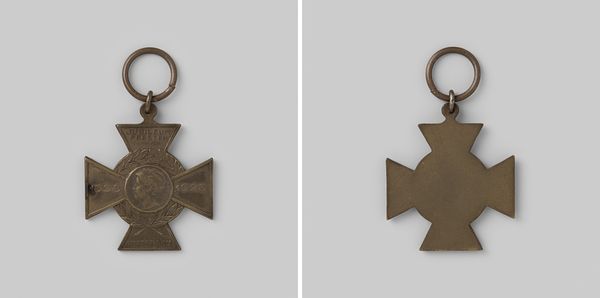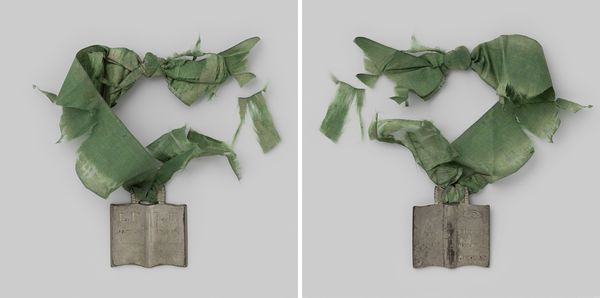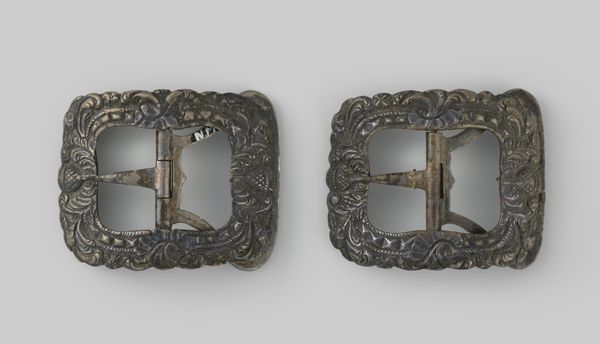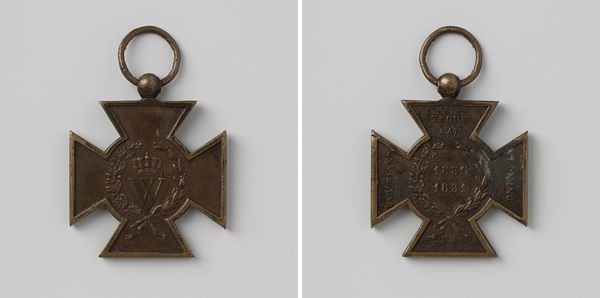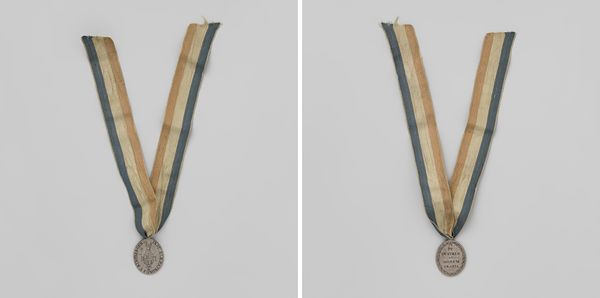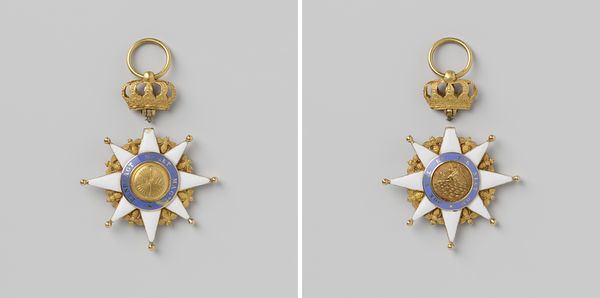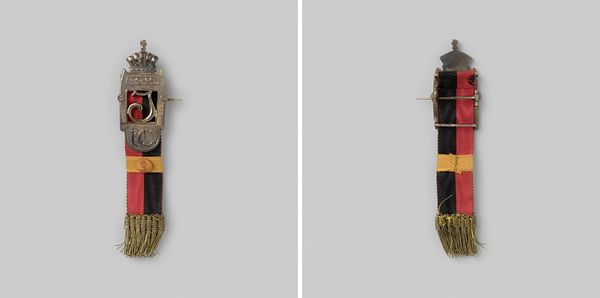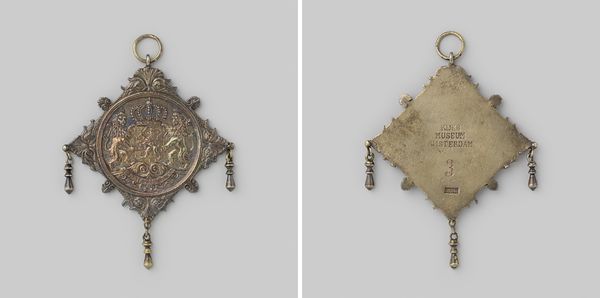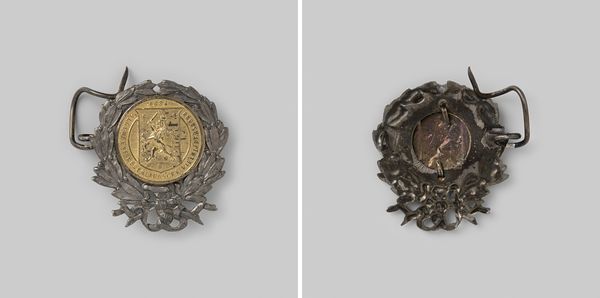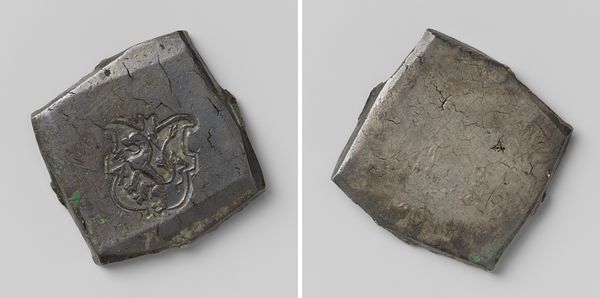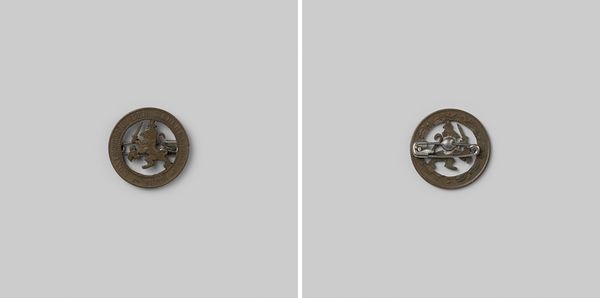
metal, bronze
#
medal
#
neoclacissism
#
metal
#
bronze
#
history-painting
Dimensions: length 12.2 cm, length 3.4 cm, length 2.9 cm, width 2.9 cm, weight 14.43 gr
Copyright: Rijks Museum: Open Domain
Curator: This medal, created anonymously between 1830 and 1831, is a Metalen Kruis voor de Tiendaagse Veldtocht, sometimes known as the Hasseltkruis. Editor: It’s rather small, isn't it? A bronze cross suspended from a green and beige ribbon, appears quite worn but has aged into a beautiful verdigris hue. The light catches the medal face and creates subtle tonal shifts. Curator: Indeed. It was awarded to those who fought in the Ten Days’ Campaign, a military conflict following the Belgian Revolution, part of a period where national identities were violently contested and defined. Think about who gets to define the meaning of courage! Editor: The formal choice to cast the cross in bronze seems significant, providing weight and solidity while its design, drawing on Neoclassical motifs, provides an aura of enduring dignity to the medal and thus the recipient. Curator: The distribution of these medals also became a crucial part of shaping the narrative around the revolution, promoting certain ideals of heroism and national identity while marginalizing others. It becomes a political symbol! Editor: Notice how the design elements converge, with an ordered cross shape surrounded by what appears to be an olive wreath? This immediately evokes harmony, a controlled resolution of conflict through classical structure. It seems to project an illusion of rational order over raw historical chaos. Curator: That perceived "order" certainly played well into solidifying power for the newly established Belgian state. It made sure their interpretation of events and who they valorized, was memorialized for generations! Editor: Ultimately, what's captivating is how this small object contains layers of symbolism. Its composition guides how we perceive sacrifice, victory, and ultimately the idea of Belgium. Curator: Exactly. Examining it invites consideration of broader questions regarding how history is memorialized, which stories get told, and whose sacrifices are deemed worthy of recognition in the social memory of a new country. Editor: Agreed, this piece exemplifies how something simple becomes profoundly rich when viewed through an historical and socio-political lens.
Comments
No comments
Be the first to comment and join the conversation on the ultimate creative platform.

